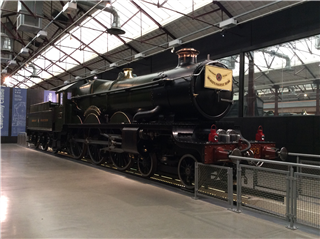The 4073 or Castle Class are 4-6-0 steam locomotives of the Great Western Railway, built between 1923 and 1950. They were designed by the railway's Chief Mechanical Engineer, Charles Collett, for working the company's express passenger trains. They could reach speeds of up to 100 mph.
Charles Collett succeeded Churchward as Chief Mechanical Engineer of the GWR in 1922 and immediately set about meeting the need for a new locomotive design that would both supplement the Stars and replace them on the heaviest expresses. Collett's solution was to take the basic layout of the Star with an extended frame and add a newly designed No.8 boiler which was both larger and lighter.
The increased amount of steam that this produced allowing an increase in the cylinder diameter from 15 in × 26 in to 16 in × 26 in. The extended frame allowed for a side window cab and an increased grate area. The result was an increase in tractive effort to 31,625 lb, and a locomotive that looked attractive and well-proportioned while remaining within the 20-ton axle limit. When introduced they were heralded as Britain's most powerful express passenger locomotive, being some 10% more powerful than the Stars.
The Castles handled all but the heaviest loads, these being entrusted to the 30-strong King Class, themselves a development of the Castles with an even larger boiler and smaller wheels (6 ft 6 in diameter) for both increased tractive effort and to allow for loading gauge clearance.
171 were produced, eight have been preserved, six have operated in preservation.
